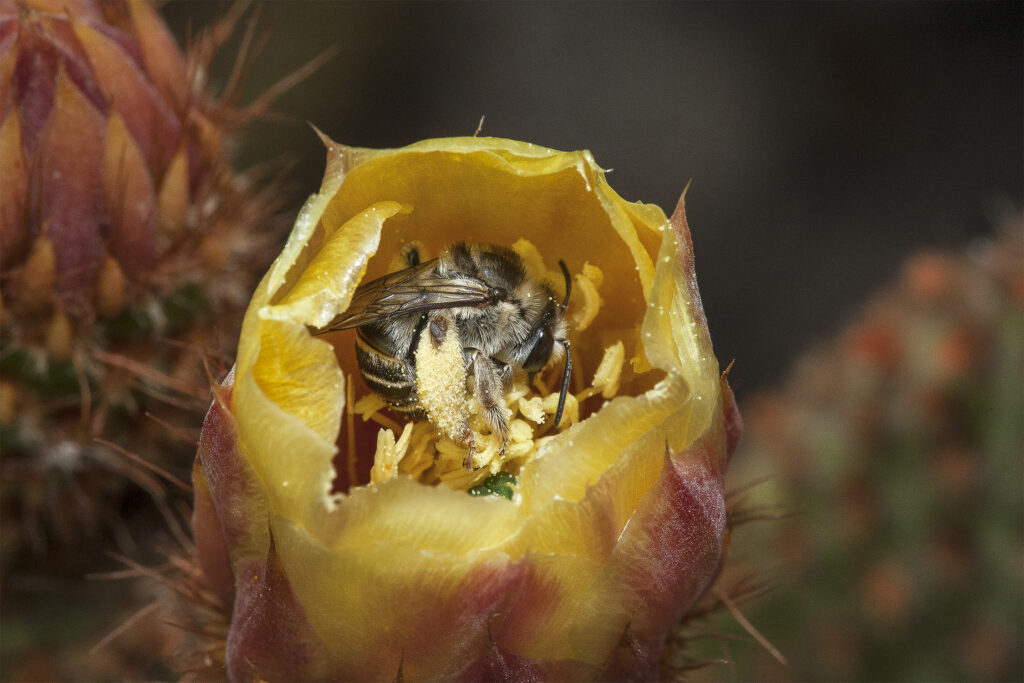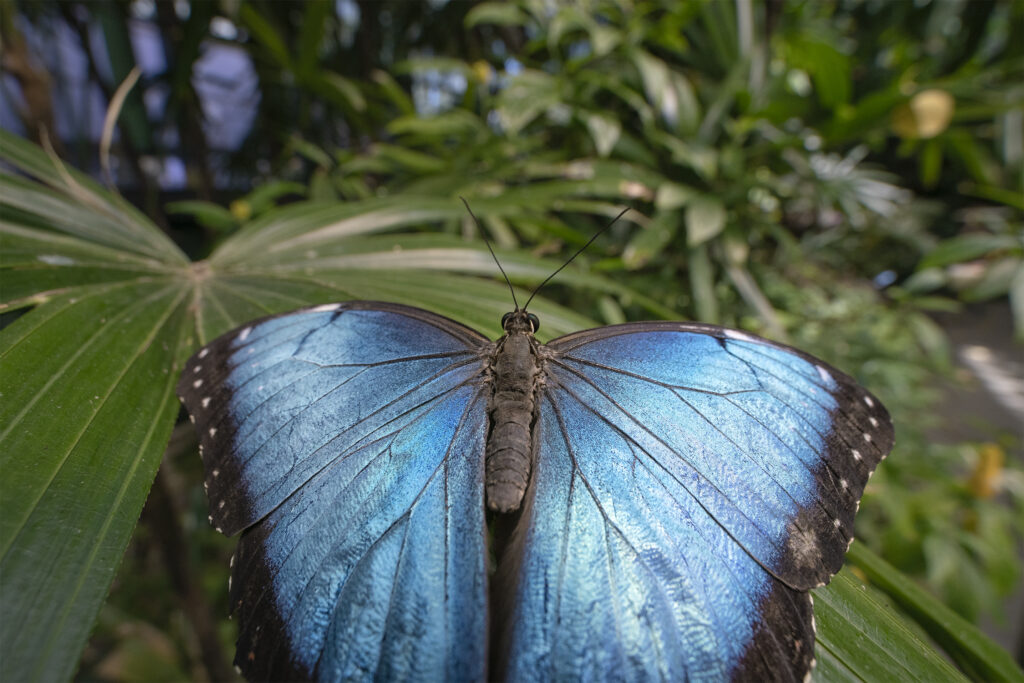
The Buzz About Pollinators
Pollinators are an incredible group of animals that ensure the health of our ecosystems by helping plants to reproduce. In a world that tends to focus on the “charismatic megavertebrate,” it’s often surprising to learn that the smallest animals are the real powerhouses of pollination. If this doesn’t sound like a big deal, consider that 1,200 crops and over 180,000 species of plants require pollination, and without pollinators like these specialized insects— specifically bees, flies, beetles, butterflies, and moths—life as we know it would cease to exist. Pollination dates back millions of years, and among the first animals on record to pollinate were beetles. (Fun fact: there are more beetle species on Earth than any other type of animal!)
Reciprocal Relationships
Pollination may seem a bit like a happy accident, and to the pollinating animal, it’s merely a consequence of gathering resources. Even so, it’s also the result of millions of years of plant and animal coevolution refined to increase efficiency! Pollen transfer is required for plant fertilization, and many insects and other animals depend on nectar and pollen for food. The plant capitalizes on the insects’ act of gathering these resources, and in some cases, can lure them with a sweet treat (nectar).
In addition, the plant’s structures have evolved to make sure as much pollen as possible contacts the insect before it leaves—something that obviously also benefits the insect tremendously. Win-win! For example, a bumble bee may have to climb inside a tubular flower to access the pollen, then buzz violently by contracting their wing muscles at a certain frequency to ensure that the pollen is released. When that bumble bee lands on another flower of the same species and transfers pollen grains to the female part of the plant, fertilization occurs, and the plant can make fruit and/or seed.

To that end, the insects have evolved their own methods of packing in the pollen and nectar. Have you noticed how many pollinating insects have a fuzzy appearance? This is a great example of an adaptation that helps maximize pollen gathering. The dusty, electrostatically charged pollen sticks to the oppositely charged fuzzy hairs on the insect’s body and is transferred when the insect moves on.
The next time you see a bee in a flower, look at their hind legs, and you may notice a large round patch of yellow that hides a cluster of stiff hairs. These are corbiculae, often called “pollen baskets” or “pollen pants,” which serve as storage vessels for foraging bees. Once covered in pollen, some bees actively comb it into the corbiculae with their legs. Other bees, like leafcutter and mason bees, carry pollen on the underside of their abdomen. Identifying the type of “pollen packing” structures present on a bee can be a key identification feature in the wild.

Make Food, Be Food
We have been talking a lot about bees, and rightly so: in terms of contribution among insects, bees are the hands-down winners of the “Best Pollinator” category—insect or otherwise. They are elite pollination machines, and a big reason why pollinators are in the spotlight (for better or worse). Indeed, bees worldwide are highly susceptible to habitat loss and pesticide usage, and have suffered dramatic declines over the past decades. Although several bee species have been listed as endangered under the United States Endangered Species Act for many years, insects as a group only recently became eligible for protection under the California Endangered Species Act (CESA). This is great news for four species of California bumble bees, a flower-loving fly, and 16 butterflies and moths, which may soon benefit from being categorized in the language of the CESA document as “fish” (look it up!).

Although butterflies and moths are also pollinators, and effective at helping the plants that they visit (primarily for nectar) reproduce, they have an even more significant and unsung role: that of prey. In every habitat where they occur, they feed birds, lizards, rodents, amphibians, foxes, raccoons, bats, and even the largest and most unexpected of species—the grizzly bear. It’s been estimated that a foraging grizzly bear in the Rocky Mountains may eat up to 30,000 army cutworm moths a day in the summertime! Butterflies and moths make up around 11 percent of all animal biodiversity and their contributions, while often unrecognized, are nevertheless irreplaceable.
Protect the Future and Appreciate the Present
For more than a decade, the San Diego Zoo Entomology department has partnered with the U.S. Fish and Wildlife Service on the recovery of imperiled butterflies in San Diego County. Each spring at the Zoo’s Butterfly Conservation Lab, we rear federally endangered Quino checkerspot (QCB) and/or Laguna Mountains skipper (LMS) butterflies from eggs. To date, more than 16,000 QCB larvae and 600 LMS pupae/larvae have been reared and released to help augment existing local populations or reintroduce species to their historic range.

From March 16 through May 12, during Spring Safari featuring Butterfly Jungle, guests at the San Diego Zoo Safari Park can immerse themselves in a lush habitat at Hidden Jungle that highlights the diversity of butterflies from tropical regions. The vibrant colors and range of sizes show the magnificence of these animals. Similarly, springtime is the best time to visit the Baja Garden at the Safari Park to see native pollinators in action—San Diego County is a biodiversity hotspot, and this garden is a beacon for wildlife!
Additionally, the Spineless Marvels habitat in Wildlife Explorers Basecamp at the Zoo is another excellent pollinator destination. Brilliant blue morpho butterflies fly year-round in the greenhouse, and guests can witness them transforming into butterflies in the emergence chamber. The top floor of Spineless Marvels also offers a glimpse into the life cycle of other pollinators such as honey bees, monarchs, and giant flower beetles, with larger-than-life honeycombs and an immersive migration flyover. Through the observation window upstairs, you may find wildlife care specialists working with beetles, katydids, tarantulas, and other fascinating invertebrates, or preparing exotic butterfly pupae for their metamorphosis into adults.

"Bee" an Ally
Everyone can help local pollinators by avoiding pesticides, growing nectar plants, and returning your garden to a regionally appropriate native habitat for wildlife. Native plants are the best choice for native wildlife, and especially for native pollinators, who have evolved right alongside them. The best part is that this type of habitat transformation builds on itself, and soon more native species will show up and benefit from your efforts!




